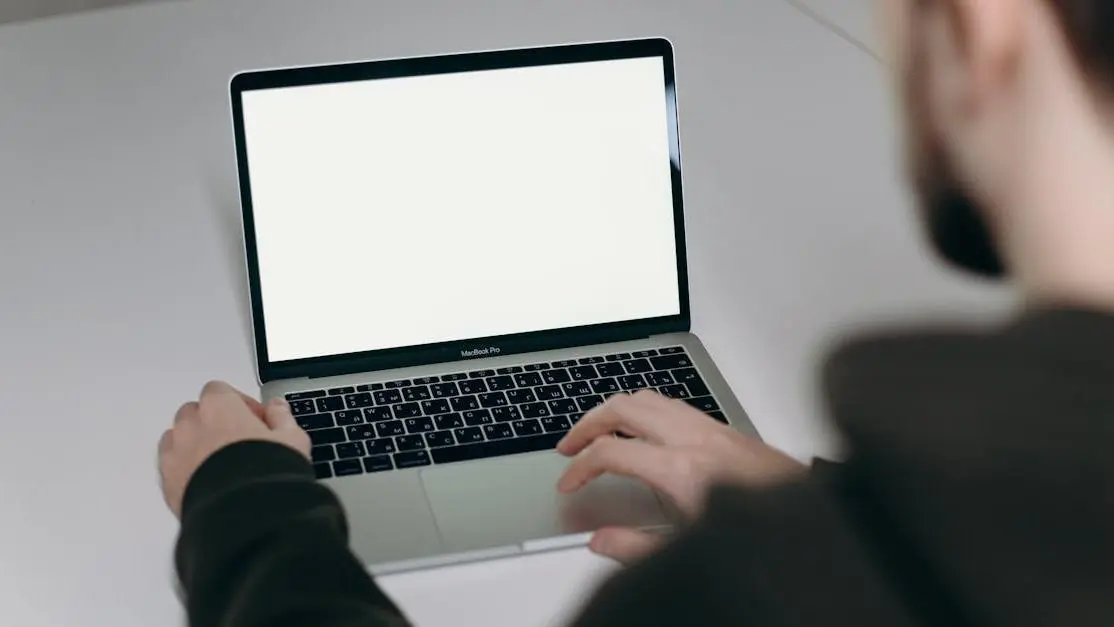Feeling stuck with endless to-do lists?
Discover 5 ways to increase productivity that actually work. In this article, we’ll explore practical strategies to help you maximize efficiency and get more done.
These proven methods are designed to simplify your workflow and make your days more productive.
Read on to transform your productivity and reclaim your time.
- 1. Prioritize Your Tasks Effectively
- 2. Utilize Time-Tracking Tools
- 3. Break Tasks into Smaller, Manageable Steps
- 4. Implement the Pomodoro Technique
- 5. Minimize Distractions
- 6. Automate Repetitive Tasks
- 7. Take Care of Your Health
- The Importance of Workplace Ergonomics
- Leveraging Technology for Better Productivity
- Conclusion: Boost Your Productivity Today
1. Prioritize Your Tasks Effectively
At Peak Performance, we understand that effective task prioritization is the cornerstone of productivity. So how do you prioritize effectively when faced with an overflowing to-do list?
Start by identifying the tasks that deliver the most value. Use tools like the Eisenhower Matrix, which categorizes tasks based on their urgency and importance. This simple but powerful tool helps you decide which tasks require immediate attention, which can wait, and which can be delegated or eliminated.
To break it down:
- Important and Urgent: Do these tasks immediately.
- Important but Not Urgent: Schedule time for these tasks.
- Not Important but Urgent: Delegate these tasks.
- Not Important and Not Urgent: Consider eliminating these tasks.
Another effective technique is the MoSCoW Method. It categorizes tasks into:
- MUST haves
- SHOULD haves
- COULD haves
- WON’T haves
This method is particularly useful for project management, helping you focus on what is critical for success. By categorizing your tasks, you can work on what truly matters rather than getting bogged down by less important activities.
Lastly, try the “Eat the Frog” technique popularized by Brian Tracy. The idea is to tackle the most challenging or critical task first thing in the morning. Completing this daunting task early boosts your confidence and sets a productive tone for the rest of the day.
2. Utilize Time-Tracking Tools
Understanding how you spend your time is crucial for optimizing productivity. Time-tracking tools shed light on your work habits, helping you identify time-wasting activities and areas for improvement.
Toggl Track provides robust reporting and insights into your work patterns. Use it to analyze how you spend your time and make data-driven decisions to optimize your daily schedule.
TimeCamp stands out with its productivity monitoring features and detailed reports. Affordable and easy-to-use, TimeCamp helps you track performance, evaluate productivity, and make necessary adjustments.
If billing clients is part of your routine, look into Harvest. It simplifies time tracking and streamlines the invoicing process, reducing administrative tasks and freeing up more time for productive work.
For a no-cost solution, Clockify offers a comprehensive suite of features, including activity monitoring and detailed reports. It’s an excellent choice for gaining insights into your productivity and managing your tasks effectively.
Implementing these tools will help you get a clear picture of how you’re using your time, allowing you to focus on high-value activities and eliminate time-wasters.
3. Break Tasks into Smaller, Manageable Steps
Large tasks can be intimidating, often leading to procrastination. The key to overcoming this is to break them into smaller, manageable steps.
Start by defining the milestones needed to complete your task. For example, if you’re writing a report, start with an outline, write the introduction, and then proceed chapter by chapter. This approach turns an overwhelming project into a series of achievable tasks.
Using the ABCDE Method can further refine task management:
- A tasks: Very important, do first.
- B tasks: Important, but not urgent.
- C tasks: Nice to do, but not essential.
- D tasks: Delegate to someone else.
- E tasks: Tasks to eliminate.
Tackle each category in order, ensuring you start with your A tasks. Assign numbers within each category to determine the exact order of completion.
Additionally, calendarize these tasks. If you have a significant deadline six months away, break the work into weekly or daily tasks and schedule them. This keeps you on track and prevents last-minute rushes.
4. Implement the Pomodoro Technique
Boosting your focus and efficiency is achievable with the Pomodoro Technique. This method involves breaking your work into 25-minute intervals, known as “Pomodoros,” separated by short breaks.
Here’s how to implement it:
- Choose a task to work on.
- Set a timer for 25 minutes and work on the task without interruption.
- When the timer rings, take a 5-minute break.
- Repeat the process. After completing four Pomodoros, take a longer break (15-30 minutes).
This method leverages our natural productivity cycles, creating a sense of urgency and encouraging sustained focus. By punctuating your work with breaks, you maintain high energy levels and avoid burnout.
Customize the length of your work sessions and breaks if needed; some find 50-minute sessions followed by 10-minute breaks more effective. Use your break times wisely: stretch, meditate, or grab a healthy snack. The goal is to refresh and prepare for the next Pomodoro.
5. Minimize Distractions
Distractions are productivity’s worst enemy. Identifying and minimizing them can dramatically improve your focus.
Start by recognizing common distractions in your environment. These may include:
- Mobile Phones: Limit usage by setting specific times to check messages.
- Noise: Use noise-canceling headphones or listen to white noise to drown out background sounds.
- Clutter: Organize your workspace to reduce visual distractions.
Create a dedicated workspace that signals your brain it’s time to work. If working from home, set boundaries with family members to minimize interruptions.
Lastly, set clear boundaries with your colleagues. Let them know your peak productivity times and establish ‘do not disturb’ periods. This way, you can work uninterrupted while remaining available when needed.
By addressing these distractions head-on, you create an environment conducive to focused, uninterrupted work.
6. Automate Repetitive Tasks
What if you could free up precious time by letting technology handle your repetitive tasks? Automation tools are your solution. By automating tasks, you can focus on more critical aspects of your work, improving your productivity and efficiency.
Here are some tools to consider:
- Zapier: Connects your favorite apps to automate workflows. Imagine linking your email to your project management tool, ensuring tasks are updated in real time, without any manual effort.
- IFTTT (If This Then That): Automates interactions between different services. For instance, if you add a new contact in your CRM, IFTTT can automatically add them to your email list.
- Trello: Known for its user-friendly project management features, Trello also offers automation to handle repetitive tasks. Set up rules to move cards, assign members, or create tasks based on activity triggers.
- Microsoft Power Automate: This tool helps automate repetitive tasks across various applications and services, allowing you to create custom workflows that streamline your daily operations.
By embracing automation, you can reduce the time spent on mundane tasks and redirect your energy toward activities that truly matter.
7. Take Care of Your Health
Your productivity hinges on your physical and mental well-being. When you feel good, you work better. Here’s how to prioritize your health for peak performance.
Nutrition: Opt for a balanced diet rich in whole foods, lean protein, fruits, and vegetables. Proper nutrition fuels your brain, providing the energy needed to stay focused and productive.
Exercise: Regular physical activity boosts both your physical and mental health. Aim for at least 30 minutes of exercise most days. Choose activities you enjoy, whether that’s walking, cycling, or yoga.
Sleep: Quality sleep is non-negotiable. Strive for 7-9 hours each night. This helps your brain function at its best, aiding in memory, decision making, and critical thinking.
Here’s how you can quickly integrate these into your daily routine:
- Morning Routine: Start your day with a nutrient-rich breakfast and a short workout.
- Midday Break: Use part of your lunch break for a quick walk or some stretching exercises.
- Bedtime Routine: Establish a wind-down routine 30 minutes before bed to improve sleep quality.
By taking care of your body and mind, you’re setting the stage for heightened productivity and overall well-being.
The Importance of Workplace Ergonomics
Creating a workspace that supports your body is crucial. Poor ergonomics can lead to discomfort, distractions, and even injury, all of which can hurt your productivity.
Key Ergonomic Tips:
- Chair and Desk: Ensure your chair supports your lower back and that you can sit with your feet flat on the floor. Your desk height should allow your elbows to rest at a 90-degree angle.
- Monitor Placement: Position your monitor at eye level, about an arm’s length away. This reduces eye strain and encourages proper posture.
- Keyboard and Mouse: Place them so your wrists can remain straight. Consider using ergonomic peripherals designed to reduce strain.
Incorporating ergonomic principles into your workspace can result in:
- Less fatigue and discomfort: A supportive setup reduces strain on your muscles and joints.
- Better focus: A comfortable work environment minimizes distractions, allowing for prolonged periods of concentration.
Remember, a well-designed workspace is an investment in your productivity and health.
Leveraging Technology for Better Productivity
Technology can be a game-changer when it comes to productivity. Using the right tools can help you streamline your workflows, keep track of tasks, and stay connected with your team.
Top Tech Tools to Consider:
- Slack: Centralize your team communication. Organize channels by projects, departments, or specific topics to keep conversations focused and easy to find.
- Trello/Asana: These project management tools help you track tasks and deadlines. Visual boards and timelines provide clear progress updates for your projects.
- Google Drive: Share and collaborate on documents in real time. Cloud storage ensures you can access your files from anywhere, making remote work more seamless.
- Clockify/Hubstaff: Time-tracking software that helps you understand your work habits. Track hours spent on different tasks to identify where you can improve efficiency.
By integrating these tools into your daily operations, you can improve collaboration, stay organized, and manage your time more effectively.
Conclusion: Boost Your Productivity Today
Increasing your productivity is a journey of small, consistent changes that build over time. By implementing the strategies discussed—automating repetitive tasks, taking care of your health, optimizing your workspace ergonomics, and leveraging the right technology—you can create a more efficient, productive work environment. Start today and experience the difference these changes can make.
Need more personalized advice? Contact us at Peak Performance for tailored strategies to optimize your productivity.



